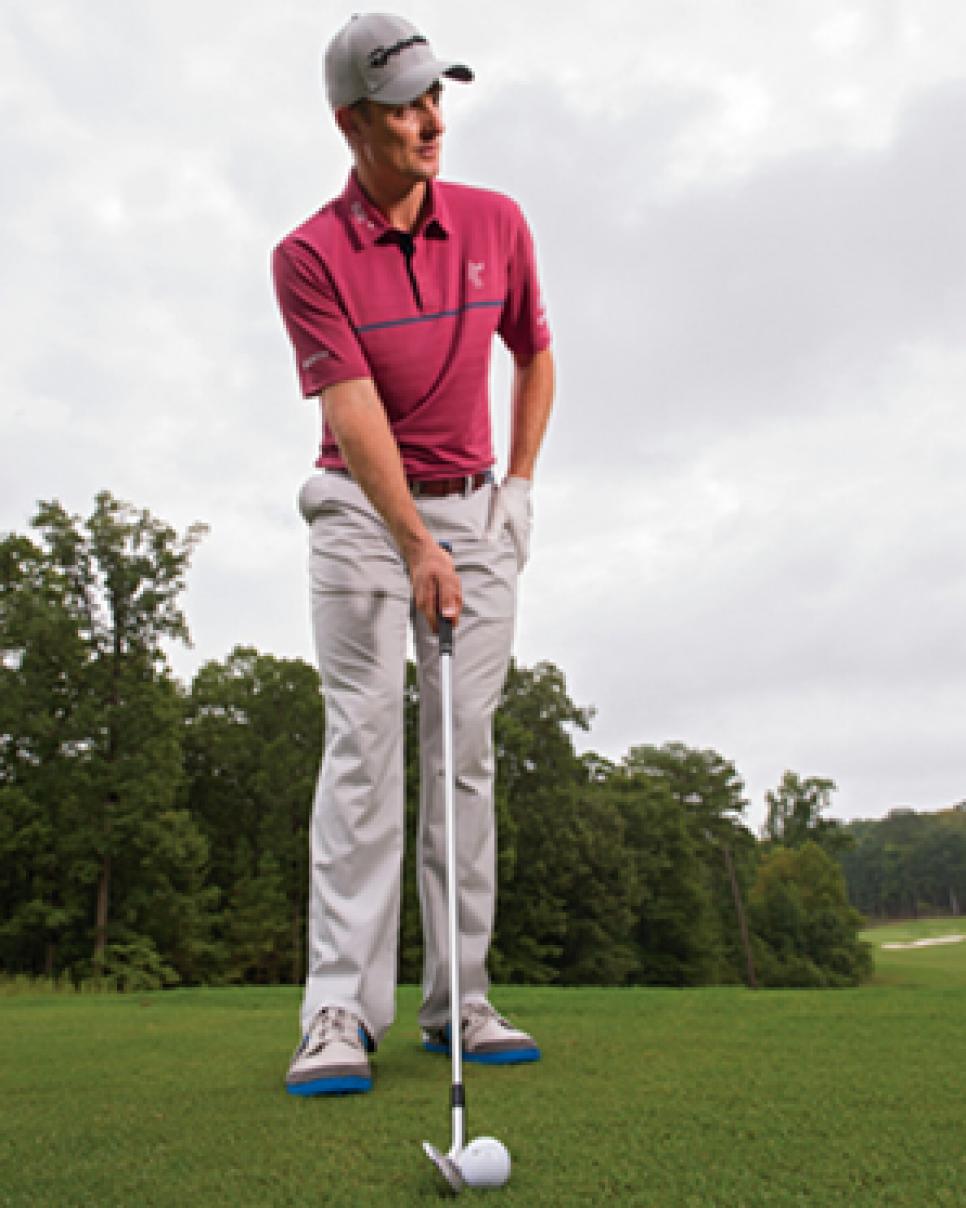Instruction
Pure Your Irons

Once the ball is in the fairway, it's time to put a good swing on my approach shot to get a look at birdie. Although the basic mechanics of the iron swing are similar to the driver, there are some differences. Namely, you want to hit down instead of hitting up. Here's what I do on my iron shots:
TO THE GREEN
My ball position with the irons is farther back than with my driver, but it's still forward of center. Moving the ball back like this naturally puts more weight on my front foot, so I'm more over the ball. That's a classic iron position. In the takeaway, I think about having good width, but my arms don't travel as far as they do in a driver swing. I like to feel a nice, tight windup to the top—a full body turn but a shorter arm swing. Another key is to stay more centered, without much lateral movement. This makes it easier to keep all the parts in sync.
As with the driver, a good key is to feel your weight load into your right leg. But make sure the pressure stays on the instep of your right foot. If you shift to the outside, you move off the ball, and that makes it tough to get back at impact.

When I swing down, I feel as if I'm leading the clubhead with my hands until just before impact. I know I've hit it well when my left arm feels real solid at the low point of the swing. (The low point is just past impact, at the end of the divot.) In the photo at far left, you can see how my left arm and the club are in line as the ball launches off the face.
IRON PRACTICE
The position of the clubface at impact dictates where the ball starts, and it begins with the setup. I try to go with clear targets. If there's someone wearing an orange sweater two yards left of the flag, that's what I'm zeroing in on.
To aim, I draw an imaginary line from my target to the ball (right). Then I choose an intermediate target on that line about six feet in front of me. I square the club to the shorter target, then take my stance. Practice that at the range, and make it part of your routine.—with Keely Levins